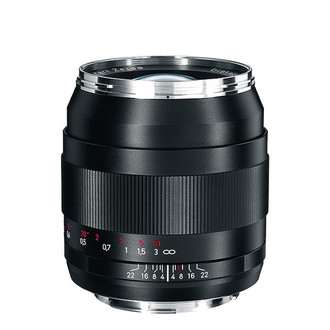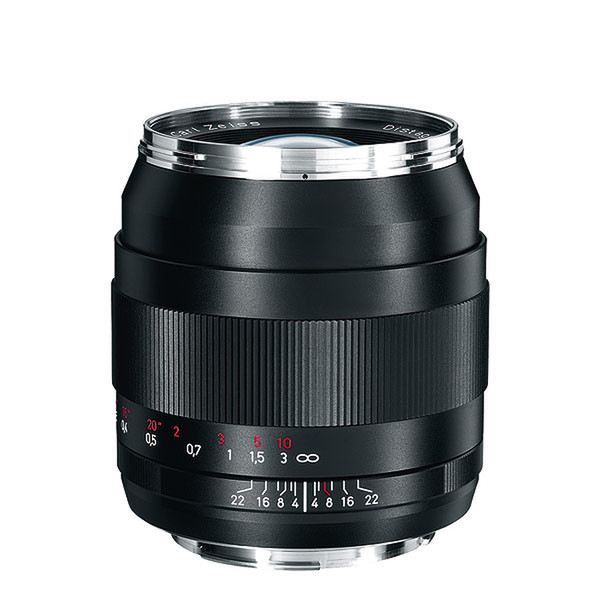Catalog
-
Catalog
- Antiquitäten & Kunst
- Auto & Motorrad: Fahrzeuge
- Baby
- Business & Industry
- Bücher
- Camping & Outdoor
- Feinschmecker
- Garden & patio
- Haustierbedarf
- Heimwerken & Garten
- HiFi & Audio
- Home, Construction, Renovation
- Household appliances
- Kleidung & Accessoires
- Modellbau
- Musik
- PC- & Videospiele
- Photo & camcorders
- Sammeln & Seltenes
- Spielzeug
- TV, Video, DVD
- Telekommunikation
- Uhren & Schmuck
- Wellness & Beauty
- computers & electronics
- entertainment & hobby
- fashion & lifestyle
- food, beverages & tobacco
- health & beauty
- institutional food services equipment
- medical equipment, accessories & supplies
- office
- sports & recreation
- vehicles & accessories
- weapons & ammunition
Filters
Search

Carl Zeiss Distagon T* 2/35 ZE SLR Standard lens Black
MPN: 1762-850
🚚 Select the country of delivery:
Delivery from:
Germany
Sale and delivery by:
Where to buy and prices (Advertising *)
On Top
Technical specifications
On Top
Weight & dimensions
| Diameter | 73 mm |
|---|
Lens system
| Fixed focal length | 35 mm |
|---|---|
| Maximum aperture number | 22 |
| Diagonal angle of view (max) | 62 ° |
| Closest focusing distance | 0.3 m |
| Component for | SLR |
| Minimum aperture number | 2 |
Additionally
| Lens structure | 9/7 |
|---|
35 mm, f/2.0 – f/22, 0.3 m – ∞, M 58 x 0.75, ø 73, 570g
<b>Make the most of the moment</b>
The Distagon T*2/35 is a medium wide-angle lens, ideal to capture any scene in all its natural brilliance – with nothing escaping its gaze, even in low-light situations. Its compact design and the short, precise angle of focus rotation make it particularly suitable for journalistic photography. And with its high performance and versatility, it is always ready for the unexpected.
When wide angle views go to extremes and beg the control via an SLR viewfinder, which means that the back focal distance has to be much larger than the focal length, a retrofous design called Distagon is the right choice.
<b>Homogeneous image quality throughout the image field</b>
ZEISS lenses are famous for their extraordinary image quality. Even with challenging subjects, perspective, color and light are optimally rendered – throughout the entire 35 mm image field. For this reason, we place great emphasis on particularly high image quality, e.g. low distortion and outstanding stray light reduction for rich colors.
<b>Excellent image quality</b>
The ZEISS range of T*® lenses offers the highest possible standards in terms of performance, reliability and, of course, image quality. Quite simply, they are superior in every way. You can count on highly advanced flare control for crisp and brilliant images, for example. And virtually zero geometric distortion, ensuring precise accuracy when reproducing shapes – especially useful when photographing products and architecture.
<b>Precise manual focus</b>
Manually focusing a lens means controlling the image result from your fingertips. A good ergonomic design makes all the difference. ZEISS lenses stand out with their large rotation angle which enables precise focusing. Changes are immediately visible in the viewfinder. The high-quality focusing mechanism moves smoothly without play, thus also supporting the intuitive interaction with the focal plane. The precise engraving in meter and feet, and the depth of focus scale provide additional support for manually focusing.
<b>Floating Elements Design</b>
Today’s camera technologies and high-resolution sensors demand continuous improvement of lens performance. Thanks to the use of the latest floating element design principles, optical aberration effects in ZEISS lenses are reduced to a minimum throughout their entire focusing range. This is achieved by variation of the axial distance between individual lens elements or groups. This adjustment of the lens-to-lens distance is coupled to the distance setting to ensure correct compensation at all times. The mechanical construction of these lenses is extremely complex and they must be assembled with utmost precision – both of which are key competencies of ZEISS.
<b>ZEISS T* anti-reflective coating</b>
The optical elements of ZEISS lenses feature T*® anti-reflective coating on all surfaces and an optical design that guarantees images of superior brilliance at all times, even in unfavourable lighting conditions. We apply the anti-reflective coating to the lens surfaces by the vapour deposition of extremely thin, transparent layers on the glass. In this process, special substances are vaporized with extremely high energy in a high-vacuum environment and are subsequently deposited on the glass surfaces, one after another, as layers with precisely controlled thicknesses to achieve the desired reduction of reflective properties. The first coating techniques were employed by ZEISS as long ago as in the 1930s.
The Distagon T*2/35 is a medium wide-angle lens, ideal to capture any scene in all its natural brilliance – with nothing escaping its gaze, even in low-light situations. Its compact design and the short, precise angle of focus rotation make it particularly suitable for journalistic photography. And with its high performance and versatility, it is always ready for the unexpected.
When wide angle views go to extremes and beg the control via an SLR viewfinder, which means that the back focal distance has to be much larger than the focal length, a retrofous design called Distagon is the right choice.
<b>Homogeneous image quality throughout the image field</b>
ZEISS lenses are famous for their extraordinary image quality. Even with challenging subjects, perspective, color and light are optimally rendered – throughout the entire 35 mm image field. For this reason, we place great emphasis on particularly high image quality, e.g. low distortion and outstanding stray light reduction for rich colors.
<b>Excellent image quality</b>
The ZEISS range of T*® lenses offers the highest possible standards in terms of performance, reliability and, of course, image quality. Quite simply, they are superior in every way. You can count on highly advanced flare control for crisp and brilliant images, for example. And virtually zero geometric distortion, ensuring precise accuracy when reproducing shapes – especially useful when photographing products and architecture.
<b>Precise manual focus</b>
Manually focusing a lens means controlling the image result from your fingertips. A good ergonomic design makes all the difference. ZEISS lenses stand out with their large rotation angle which enables precise focusing. Changes are immediately visible in the viewfinder. The high-quality focusing mechanism moves smoothly without play, thus also supporting the intuitive interaction with the focal plane. The precise engraving in meter and feet, and the depth of focus scale provide additional support for manually focusing.
<b>Floating Elements Design</b>
Today’s camera technologies and high-resolution sensors demand continuous improvement of lens performance. Thanks to the use of the latest floating element design principles, optical aberration effects in ZEISS lenses are reduced to a minimum throughout their entire focusing range. This is achieved by variation of the axial distance between individual lens elements or groups. This adjustment of the lens-to-lens distance is coupled to the distance setting to ensure correct compensation at all times. The mechanical construction of these lenses is extremely complex and they must be assembled with utmost precision – both of which are key competencies of ZEISS.
<b>ZEISS T* anti-reflective coating</b>
The optical elements of ZEISS lenses feature T*® anti-reflective coating on all surfaces and an optical design that guarantees images of superior brilliance at all times, even in unfavourable lighting conditions. We apply the anti-reflective coating to the lens surfaces by the vapour deposition of extremely thin, transparent layers on the glass. In this process, special substances are vaporized with extremely high energy in a high-vacuum environment and are subsequently deposited on the glass surfaces, one after another, as layers with precisely controlled thicknesses to achieve the desired reduction of reflective properties. The first coating techniques were employed by ZEISS as long ago as in the 1930s.
-
Payment Methods
We accept:










